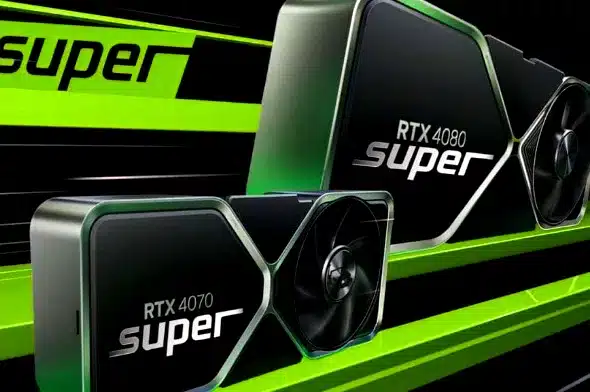The RTX 4000 Super graphics cards increasingly rely on the 12V 2×6 connector. Its specifications should also provide clues to the RTX 5000 series
The most important facts in brief
- Nvidia has introduced the 12VHPWR connector with RTX 4000
- Problems with melting connectors led to the development of the new 12V-2×6 connector
- Labeling of plugs: 12VHPWR with “H+”, 12V-2×6 with “H++”
- 12V-2×6 enables higher power consumption up to 675 watts – potentially for RTX 5000 series
With the release of the RTX 4000 super graphics cards Nvidia has mandated the 12VHPWR connector for these GPUs.
It does not matter whether it is one of the reference models called “Founders Edition” or a custom design – each of the RTX 4070 (Ti) Super and RTX 4080 Super has this power connector.
Now the 12VHPWR connector had problems with melting connectors, mainly at release, which prompted the PCI-SIG to develop a new revision of the connector: 12V-2×6 is the name of the updated socket and is intended to avoid the problems mentioned.
The 12V-2×6 connector seems to have celebrated its official debut with the aforementioned super graphics cards from Nvidia. At least this is confirmed by pictures on the X platform formerly known as Twitter:
H++ 12V-2X6 (max:675w)
H+ 12VHPWR (max:600w)
Some AIC’s 4070super 4070ti super 4080super are still using the H+12VHPWR interface pic.twitter.com/QHah921JuT– Алексей (@wxnod) February 19, 2024
How do you recognize the difference? The plugs can be distinguished from each other at a glance by the marking.
For example, 12VHPWR is identified with “H+”, whereas 12V-2×6 is identified with “H++”. The latter connector should be on board most RTX Super graphics cards; according to the tweet, only a few custom partners still have the 12VHPWR connector installed.
No explanation is given as to why some RTX Super GPUs still use the “older” connector. It is conceivable, for example, that the manufacturers still have or had residual stocks of the 12VHPWR connector, which were used for the first batch of new Nvidia graphics cards.
What makes 12V-2×6 different? The revised version promises to make the occasional overheating problems a thing of the past. This is to be achieved with the help of shortened sensors and extended power pins.
This seemingly simple change has a major impact: First of all, it ensures that the 12V lines are connected before the aforementioned sensor pins.
If the 12V 2×6 plug is not inserted correctly, the sense pins are not connected to the socket – the actually permissible power supply is denied due to the lack of detection, so that the aforementioned overheating problems cannot occur in the first place.
A pointer to RTX 5000? However, avoiding problems is not all that changes with 12V-2×6 – because according to the associated PCI specification CEM 5.1, the connection can handle up to 675 watts.
According to the latest speculation, Nvidia will rely entirely on this new power supply specification for the RTX 5000 series. A switch to the as yet undetermined PCI CEM 6.0 is also possible – but it is certain that 12V-2×6 will definitely be part of this.
As noted by the portal (Tweaktown) accordingly, a possible top model in the form of the Geforce RTX 5090 could be designed to reach new heights in power consumption.
At least theoretically, a TDP of 675 watts is possible thanks to the new connection – and with the RTX 4090 at the latest, Nvidia has already proven that it is not exactly squeamish about the power consumption of enthusiast models.


